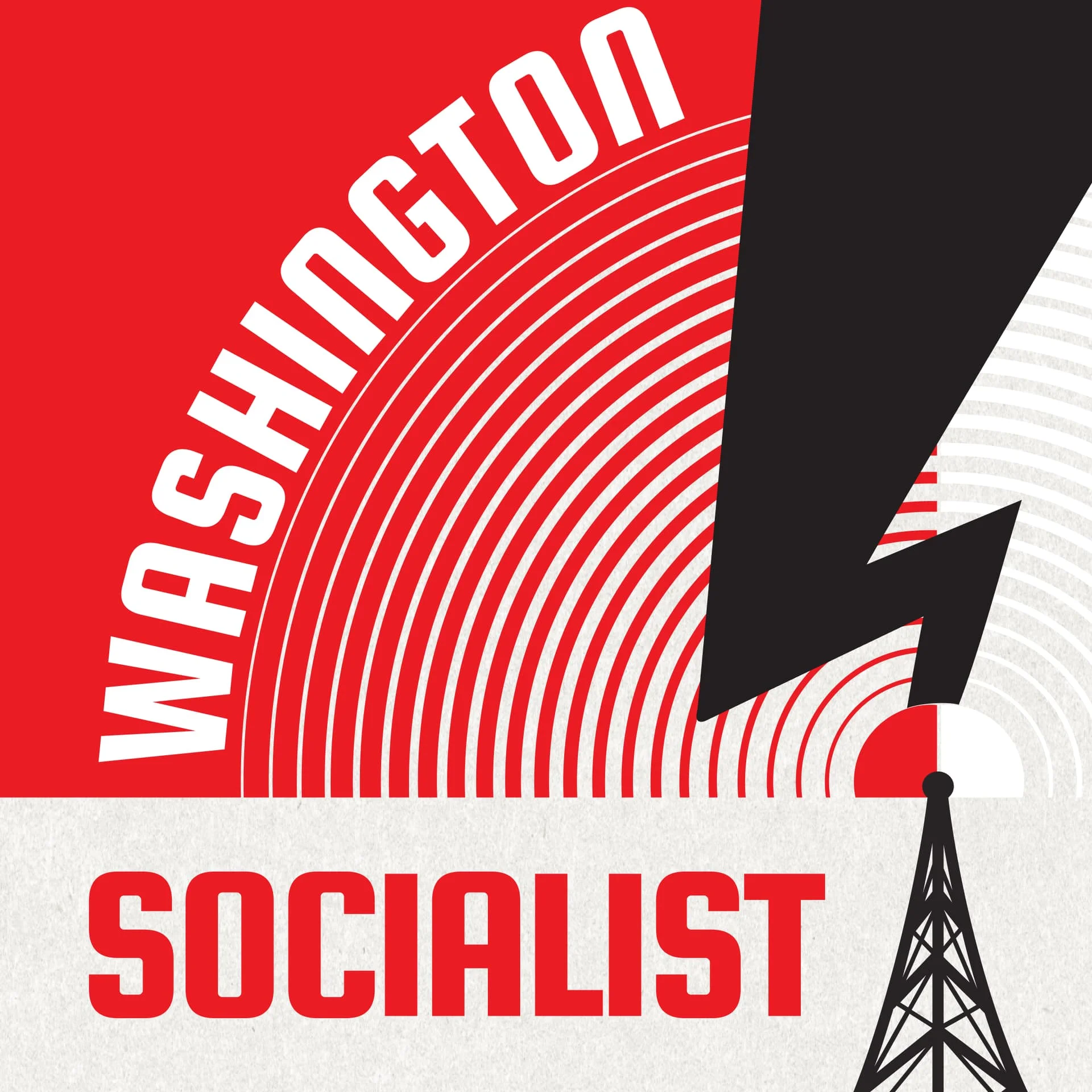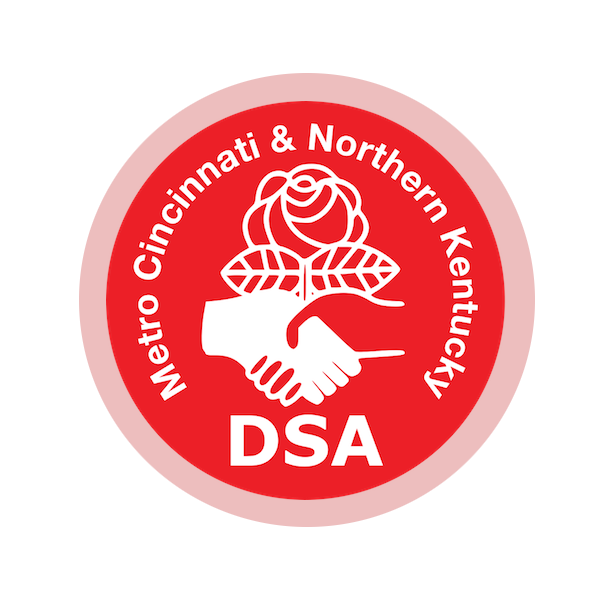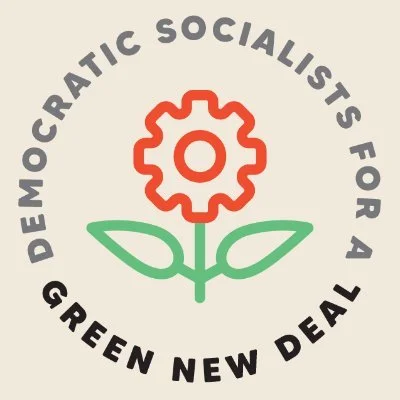

Book Review: 'What’s Left'


Addressing the Betrayal of the Black Community and the Need for Unity Against Fascism


A Hyperrealist Afterlife in Mark Fisher's "Flatine Constructs"


The Emerging Boycott Movement Against MAGA


Rank-and-File Organizing: Letter Carriers 1970–1978


Metro DC DSA Elects Eclectic Delegation for the 2025 National DSA Convention


Being Disciplined in an Online World of Cruelty


Socialism wins in NYC, whats next for Cincinnati?

On the evening of June 24th, Zohran Mamdani’s campaign shocked the world, in a surprise first round victory that caused the establishment favorite, Andrew Cuomo, to concede the race. As Zohran Mamdani took the microphone, nearly an hour after Cuomo’s concession, he spoke of his monumental walk across Manhattan, describing the workers he saw across the island still hard at work running the city that never sleeps. One of the most profoundly working class speeches the US has ever seen a political candidate given. In this late evening hour, Zohran’s victory seemed to have always been an inevitable certainty.
But in October 2024, when the debate on running Zohran Mamdani for mayor of New York City was discussed at the New York City DSA’s convention, there were many questions about whether DSA was prepared for this campaign. Zohran Mamdani, a DSA organizer who had already been elected to the New York State Assembly in 2020, was an ideal, cadre candidate to represent the organization, but the sheer size of the effort was unlike anything a DSA chapter, even a behemoth like NYC, had taken on before. And there were deep concerns about the ability to convey an unfiltered socialist, working class message in a race as widely scrutinized as that as for the mayor of New York City.
Now we see that New York City DSA has shocked the world. Zohran’s victory in the NYC mayoral primary is the hugest electoral victory the socialist left has ever achieved in US politics, and in the end, it wasn’t even close. Despite all polling to the contrary, Zohran resoundingly crushed Cuomo in the first round of ranked choice voting, leading to a near immediate concession by the up-to-then assumed victor of the election.
How did such a seemingly impossible moment instead become an incredible victory? There are multiple elements to this. Zohran Mamdani is a generational talent, with a seemingly unshakeable charisma and ability to stay on message and inspire hope in his audience. And Cuomo’s reputation did him no favors-the more voters learned about each candidate, the further Zohran’s odds rose and Cuomo’s fell.
But the real source of this victory is the organizational weight behind Zohran Mamdani as a candidate. Over 60,000 volunteers knocked over 1.6 million doors in possibly the hugest field operation NYC has ever seen. The campaign maxed out potential fundraising early due to an unprecedented amount of committed small donors throughout NYC, enthusiastic about Zohran’s campaign. And the campaign’s Democratic Socialist politics, one that stubbornly insisted on the importance of reducing costs of living and making NYC a city for everyone, successfully captured both the media spotlight and importance among voters by sheer insistence.
Behind all these remarkable successes stands the crucial point, the thing that decided this race years before it even happened: Zohran Mamdani was a committed member of Democratic Socialists of America, an organization committed to developing the power of every day working class people to change politics in this country, and an organization that decided months before that this fight was one we could win. With this victory, there is no doubt that Democratic Socialists of America has become a historic force in US politics, one based in a kind of politics that has largely disappeared from the United States: democratic, grassroots organizations driven by regular working class people.
Steering the Ship

Seeing this huge success in New York City, what is there for us to learn in Cincinnati and Northern Kentucky? While there are a number of contextual differences between ourselves and New York City, there are some core things anyone who wants a socialist left to succeed everywhere should take away.
Firstly, what Zohran successfully did was offer a politics based in hope and sincerity for the future of New Yorkers. While the fascist right has embraced cynicism as an organizing tool to encourage the US public to abandon the marginalized and oppressed, cynicism has also broadly infected politics in our society, to insist that winning better things, even if it’s what we want, is strictly impossible. Zohran’s campaign refused to cede an inch to this, insisting instead that New Yorkers “deserve to be free and fed”, that we can have everything that we deserve to lead a good life. This politics of sincerity and optimism must be the politics of Democratic Socialists of America.
Secondly, it has been common with the ebb and flow of DSA in the wake of the Bernie 2016 and 2020 campaigns to view political and historic events as something that simply occur to DSA, that we have to simply ride the waves and resist the regressions as well as we can. But Zohran’s campaign was a homegrown DSA campaign, intentionally chosen by NYC DSA to intervene in the political moment, and it is irrevocably changed the direction of politics both in New York City and across the country. While we certainly cannot control every political event that comes our way, we have the power to make our own mark on history, and we should take the opportunity to do so when we have it.
Finally, it is crucial to understand from this that power resides where we can bring people together. The powers that be rely on an increasingly common sense of powerlessness derived from us experiencing world events alone via computer and phone screens and a 24/7 stream of deeply evil events. But when we are able to come together as an organization, we transform from the framework of an individual victim of history, to a collective actor. To borrow from an excellent article on Zohran’s election:
In 2017, a DSA organizer and philosopher named Michael Kinnucan said: “US civic culture is so hollowed out at the grassroots level that in any city in the US if your organization can get 40 to 50 committed people in a room occasionally you’re probably operating one of the five or six most potentially powerful grassroots organizations in your city.
This idea was foundational to DSA, especially in New York City, and shaped Mamdani. For many, it seemed a fantasy. Five hundred thousand votes later, across nearly every language and nationality in the world, it’s a warning. To defeat the right, the left must learn from Mamdani and the DSA and rebuild mass working-class organization.”
Now is the time, in the wake of Zohran’s victory, to carve our path to power as DSA Cincinnati. While there are many differences between Cincinnati and New York City, so many of the crises Zohran plans to fight-affordability, housing, the lack of a real opposition to the Trump admin’s evil policies on immigrants, trans people and more-are crises we recognize right here in Cincinnati. It is time for us join the fight to make DSA a mass organization for millions of people, one that will take up the mantle to defeat the far right, and make Democratic Socialists of America the future of US politics.
DSA Cincinnati has already proven what it can do even with a fledgling canvassing operation. In a mere two months in 2024, DSA Cincy knocked nearly 10,000 doors to oppose Amendment 2, a Kentucky ballot measure that would have provided public school funding to private schools (the ballot measure was soundly defeated thanks to the work of unions and working class people, including DSA, across the state). Now, DSA Cincy looks to the future of Cincinnati and what can be accomplished. Democratic Socialists can take real power in Cincinnati, the same as we have in New York City. DSA has a vision of the future that meets the needs of the working class
It’s always been up to the working class to make a better future. Now it’s clear: DSA can win it. Join the fight and make it happen.


Zohran’s Win: A Positive Vision of Change (Op-Ed)
How Zohran Mamdani’s campaign used positive messaging to inspire a broad coalition of support
Throughout my life, when it comes to politics, no one in my personal life would describe my outlook as especially positive. I am a product of the times, and the times haven’t seen a lot to be very happy about if you’re interested in leftist politics, or the environment, or generally the well being of humanity.
Something began to change my outlook this past year though, and it wasn’t that Donald Trump got re-elected, in many ways cementing the complete degradation of our two-party system which has been decaying for generations. What changed for me personally was that after several years of being a mostly inactive to passive member of Democratic Socialists of America, I decided to truly engage in community action and get involved in ways that were, at first, pretty uncomfortable for me.

When I finally decided to show up to an event, I was quite literally immediately welcomed with open arms by several different comrades. The first social I joined, I was introduced to one of the most remarkable things about DSA, it is an inherently friendly cohort of people open to learning and hearing others tell their stories and share their experiences. Once you get your bearings, there is an immense sense of joy in coming together to debate and solve problems, facilitate events and organize community members around issues you care about.
In public meeting rooms, on zoom calls, and in streets all over our country, there are volunteers giving their time, passion, energy and expertise to building a mass movement to make their communities stronger, more equitable, more diverse and more healthy, and that is an unbelievably inspiring thing to witness and be a part of.
In an era of violently divisive politics, Zohran is showing that there is not only space for positive messaging, but this approach to leftist politics resonates with a diverse coalition of voters. Mamdani’s campaign, bolstered by the work of New York City’s DSA chapter, was a flawlessly executed campaign that not only educated people about his policies, but about the wider socialist theory that informed them.

This week I’ve been inundated by messages from politically disengaged and dismayed friends all expressing an unfamiliar feeling; hope. Their disbelief that Mamdani could win even in the face of corporate PAC’s and lobbyists lining up behind Cuomo, and even in the face of mass media working against him.
Democratic Socialists of America members all over the country this week are rejoicing as this win gives more proof to our theory of change; when we activate our organizational muscle and bring our message to the people in our communities, we can win elections and we can help to bring about the change we want to see.
Let this victory be a launching pad for a million more activists who are seeing, likely for the first time in their lives, a truly generational moment for socialist politics in the United States. Join us, let’s continue to build this movement.
The post Zohran’s Win: A Positive Vision of Change (Op-Ed) appeared first on Seattle Democratic Socialists of America.


Mass Call: The Fight for a Socialist Green New Deal
Hear from union leaders, DSA campaign organizers, and socialists in office who are continuing the fight for a better future. Given the hostile federal terrain we now face, local pressure campaigns in our communities and bargaining for the common good in our union contracts are the most viable pathways for winning a socialist Green New Deal this decade.
Speakers
- Thea Riofrancos (author, A Planet to Win: Why We Need a Green New Deal)
- Ashik Siddique (DSA National Political Committee, Co-Chair)
- Sarahana Shrestha (Mid-Hudson Valley DSA, Assembly District 103)
- Kelsea Bond (Atlanta DSA, council candidate)
- Alex Brower (Milwaukee DSA, Common Council District 3 representative elect)
- Michael B (Louisville DSA)
- Sam Z (DSA Los Angeles)